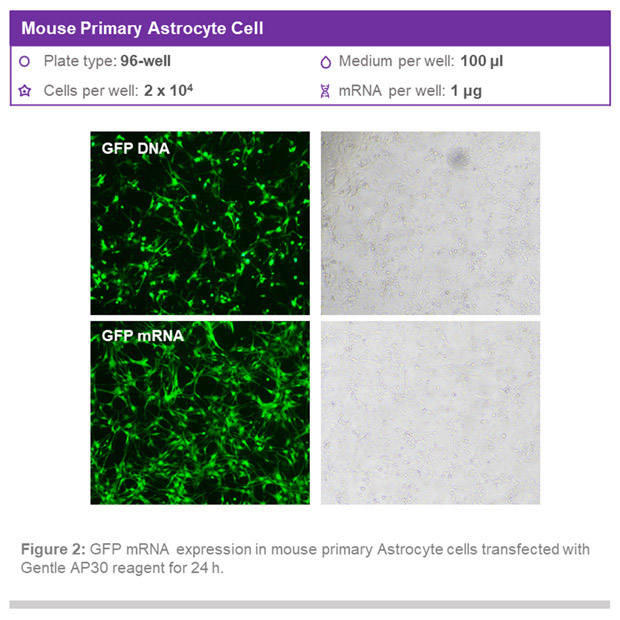Product Overview
Peptide-based nucleic acid delivery is a state-of-the-art delivery technology that can significantly improve nucleic acid transfection of a wide range of cells, including primary cells and hard-to-transfect cell lines. Based on the high-throughput peptide screening platform, GentleFectTM technology accurately identifies endogenous peptide sequences with phase separation potential, and developed the Gentle AP30 nucleic acid transfection reagent for primary cells. Peptides are self-assembled by liquid-liquid phase separation with nucleic acids to form nano-scale droplets, which can be efficiently internalized with the help of cell membrane pinocytosis, resulting significantly improvement of the nucleic acid delivery efficiency of cells across all species, while cell viability are also maintained.
Product Features
• he product is suitable for transfection of various nucleic acid molecules, including DNA, mRNA, siRNA, circRNA, Crispr, etc.;
• The product is a ready-to use transfection reagent, easily add nucleic acids to the reagent to configure the transfection solution in a single step.
Storage
4°C for short storage and -20°C for long storage.
Product Components
• Gentle AP30 Nucleic Acid Transfection Reagents for primary cells
Transfection effect




